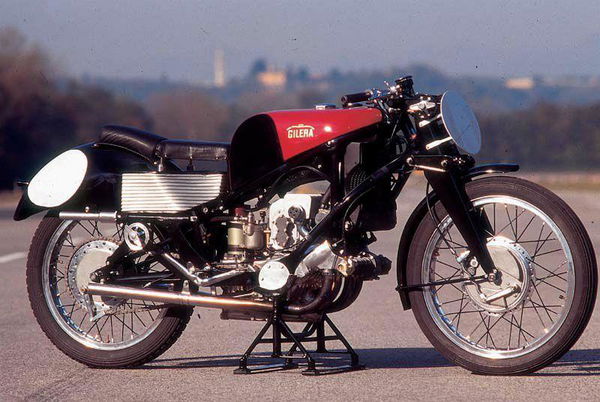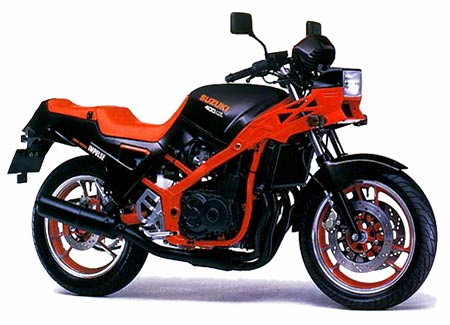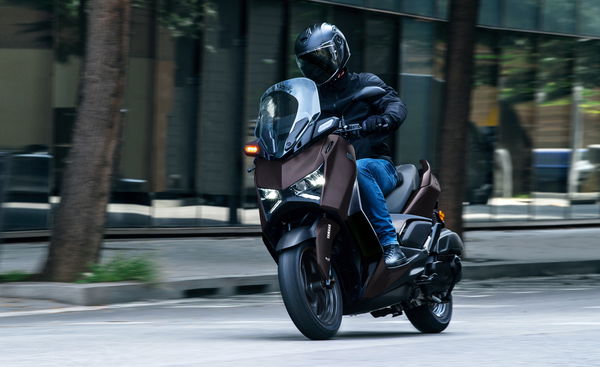10 bikes that changed everything
The 10 most influential motorcycles ever

SOME of these top 10 lists are easily quantifiable, backed-up with facts and figures and virtually impossible to argue with. Others are purely subjective, but this one falls somewhere between those extremes and depends largely on your interpretation of influence.
Influence is, according to Oxforddictionaries.com, the capacity to have an effect on the character, development, or behaviour of someone or something, or the effect itself. But even the site’s own example of the word’s use (“the influence of television violence”) starts to hint at just how controversial the term is. After all, is television violence influential?
So what bikes are influential? Does Yamaha’s GTS1000 count? It might have been innovative, thanks to that hub-centre-steered front end, but sales were weak and it wasn’t copied by others – so if anything its poor sales stopped other makers from pursuing similar ideas. So yes, it was influential, albeit in a negative way. As were other intriguing machines like Bimota’s two-stroke, fuel-injected V-Due and Suzuki and Norton’s rotary-engined experiments.
But you won’t find those bikes on this list. We’re sticking to machines that had positive influences. Bikes that introduced ideas that were later copied by others. Most of the machines here were production models, often pre-dated by race bikes using similar tech, but chosen because it was the proddy models that really proved these ideas were successful and led to widespread adoption of the same concepts by manufacturers across the board.
We virtually guarantee you’ll take exception to some of the bikes we’ve included, and you’re sure to have equally valuable suggestions of your own. So feel free to tell us what you think we’ve missed out in the comments below.
10. Rondine
The inline four-cylinder engine, mounted across the frame, has virtually become the default layout for modern bikes. Sure, there are plenty of alternatives, but the transverse four is one of the designs that’s closest to perfection, whether it’s in a Yamaha M1 or an old Honda CB750. And the 1923 design by Carlo Gianini and Piero Remor was the engine that sparked it all. After a slow start – it took until 1926 to get the motor up and running – it became the basis of the OPRA 500 GP bike in 1928 and eventually turned into the Gilera Rondine in 1935. The layout was a winner, and that engine was the basis of Gilera’s racers right into the 1970s!

9. Kawasaki KZ1000
Fuel injection appears on everything down to 50cc machines these days, but bikes were slow to ditch their carbs and as such Kawasaki’s KZ1000 from 1980 was arguably influential since it had fuel injection way before its rivals. However, it doesn’t make it higher on the list because the idea really didn’t catch on until emissions laws started to put pressure on bike firms to adopt the technology. So while the Kawasaki predated the widespread adoption of the technology, it’s hard to argue it was the driving force behind FI’s later success.
8. Yamaha RD400C
Sure, the RD400 is a classic, but the 1976 ‘C’ model gets the nod for this list for one detail alone; it saw the adoption of cast alloy wheels on a production road bike for the first time. These days, alloys are ubiquitous – a bike’s wheels only tend to get a mention if they’re not alloy. But back in the 1970s wire spokes were still the convention, even for most race bikes – Yamaha had only adopted alloys on its 500cc racers a couple of years before the RD400C appeared in showrooms with the same sort of wheels.
7. Hildebrand & Wolfmuller
We had to put the 1894 Hildebrand & Wolfmuller on this list somewhere – after all, it’s widely accepted as the world’s first production motorcycle (and, according to some, the first to use the word ‘motorcycle’ too.) But it doesn’t deserve to rank higher because there were many similar projects underway at the same time, and Hildebrand & Wolfmuller’s design was a long way from anything that became ‘conventional’ in the future. Derived from a design for a steam-powered bike, its rear axle doubled as the crankshaft, with the connecting rods and pistons driving it directly, with rubber bands used to return the pistons for the next compression stroke after each one fired. Funnily enough, it was apparently quite tricky to ride…
6. Yamaha OW61
You know we said there weren’t going to be many race bikes on this list? Well here’s our exception. The OW61 of 1982 is worthy of inclusion on a couple of fronts. Firstly, it started the trend for V4 two-strokes that became the standard means of power in 500cc GP racing right until the rules were changed to reintroduce four-strokes in 2000. And as if that wasn’t enough, its Antonio Cobas-designed chassis was arguably the first to really look like a modern aluminium beam frame – being renamed by Yamaha as the ‘Deltabox’ on the following year’s OW70 racer and from there leading to a series of frames that remains with us today.
5. BMW R12
It’s weird that over the last few decades BMW has become so well known for its oddball front suspension arrangements, because back in the 1930s it was a pioneer of what are now considered conventional telescopic forks. The R12 and R17 of 1936 both used oil-damped teles, which is why they’re included on this list instead of some of the earlier machines (like Scotts) that had undamped telescopic forks. Given that, despite endless efforts to come up with something better, the telescopic fork simply refuses to go away, BMW could be seen as prescient in adopting them so early.
4. Bimota SB2
Massimo Tamburini was rightly lauded throughout his glittering career as a great stylist, but the Bimota SB2 proved beyond doubt that his abilities as a designer of the mechanical bits of a bike were also among the best. The SB2’s shape might be a little lumpen compared to some of Tamburini’s later efforts, but in 1977 it was an early adoption for a race-style fairing on a road bike, and underneath the technology was also far more like something you’d expect to see in showrooms a decade later. Perhaps the most notable element was the monoshock rear suspension, which Tamburini managed to adopt on a road-going superbike when the idea was still pretty fresh for race-only motocrossers and had yet to make a serious mark in 500cc GPs.
3. Vincent Rapide
The Vincents made between 1936 and 1955 were the superbikes of their era and few companies since can claim to be so innovative. Bikes bearing the name were among the vanguard to use foot-operated gearchanges, for instance, and later models adopted a frameless design using the engine to double as the chassis. Strip a Ducati Panigale of its bodywork and there’s more than a hint of Vincent in its layout underneath. While there are two rear shocks, they’re mounted right next to each other, effectively predating later monoshock layouts by a few decades, too. Basically, Vincents – and most models shared the same set of ideas – were years before their time. Were they influential, though? The evidence says that the firms rivals didn’t copy the layout back in their heyday, but perhaps that’s because it was just too advanced. It’s clear that even modern bike designers occasionally take a sideways glance at a Vincent when they’re deciding how to go about doing things.
2. Honda Fireblade
Most of the bikes on this list are picked out for achieving one or two key advances that were later copied by others, sometimes to the extent of becoming normal industry practice. With the original 1992 Honda Fireblade there’s no such single idea to pick out. In fact, there’s little in terms of innovative engineering on the bike at all. Instead, the influential bit was the philosophy behind the bike in its entirety. The very idea of trying to combine the outright pace of a 1000cc-plus machine with the handling of a far lighter 600cc bike has been copied by every single superbike made since the Blade first appeared. In fact, it’s hard to remember a time when light weight and a compact size wasn’t given equal billing to outright power, but it was the Blade that singlehandedly created the template.
1. Honda CB750
We’ve already lauded the first bike to use an across-the-frame four-cylinder engine, but in terms of pure influence it’s hard to make an argument that anything, before or since, has changed the face of motorcycling like the 1969 CB750. The first mass-made transverse four-cylinder superbike, and credited by many as the first ‘superbike’ full stop, the CB750 also marked the showroom debut, at least for mainstream machines, for disc brakes. But like the Fireblade, the sum was greater than the total of its parts, brilliant though they were in isolation. That engine, for instance, didn’t just bring the smooth four-cylinder power that we’re all used to today, but it brought it with added reliability and refinement in an era when bikers were considered greasy for the good reason that most of them were covered in the stuff, either from fixing their bikes or having it sprayed over them from leaks. The CB750 didn’t singlehandedly kill the British bike industry – which was already in a drawn-out process of suicide – but it helped finish the job. And as for influence? Pre-CB750, most big bikes were drum-braked singles or parallel twins. Post-CB750 they were mainly disc-braked fours. It’s as simple as that.
Article first published October 6, 2014.
Want more?
Top 10 interesting Suzukis you might not know about
Visordown's Top 10 most read bike reviews of 2014











